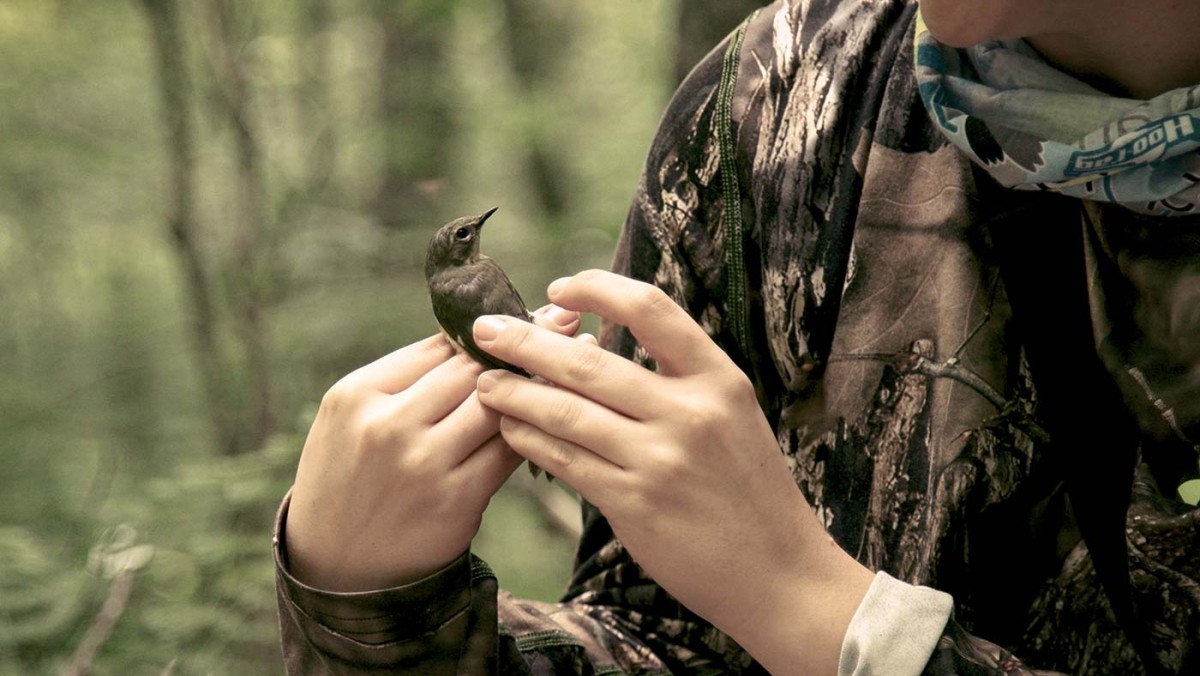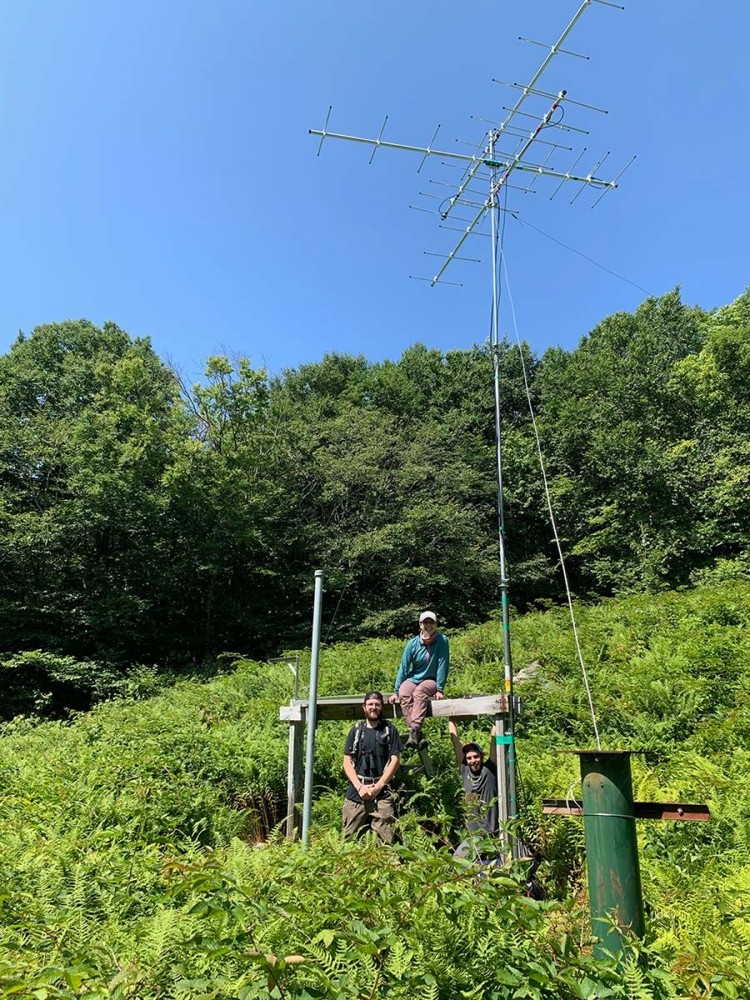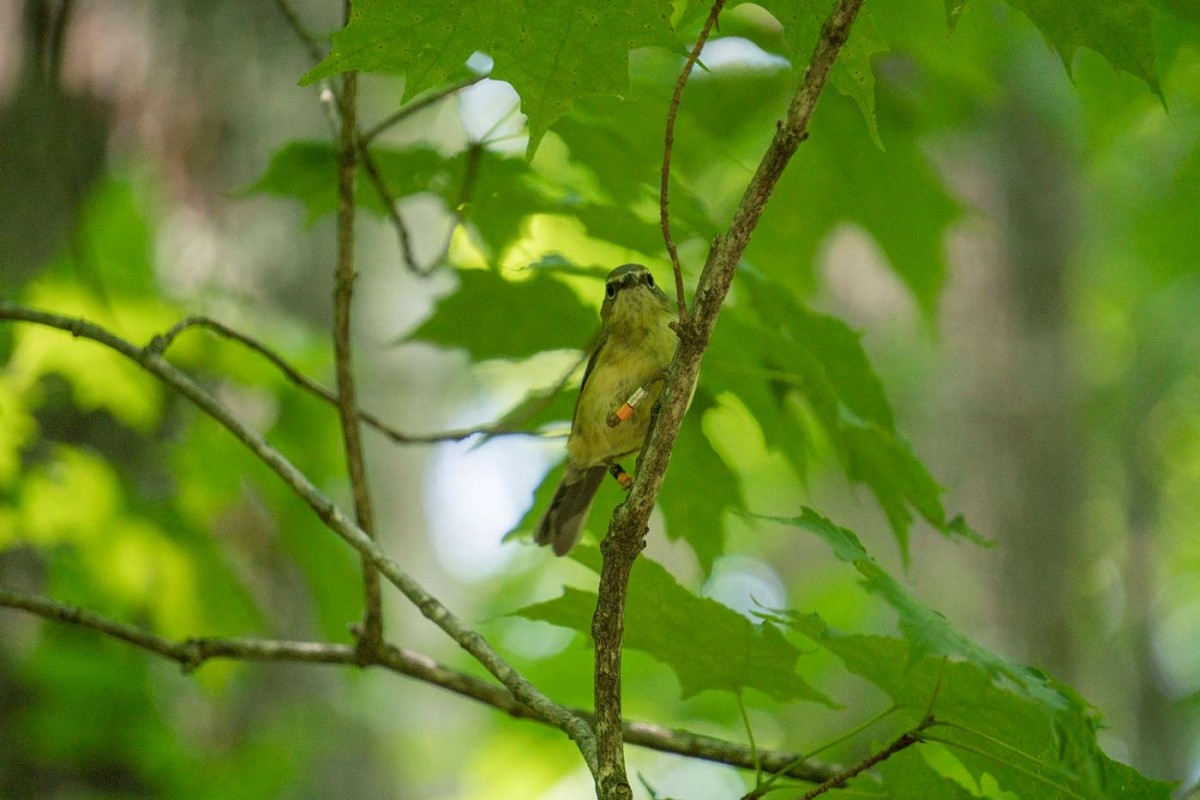
Alicia Brunner grew up in Wisconsin and spent much of her childhood outside, canoeing and four-wheeling with her family and playing in the backyard. From a young age, she was fascinated by wildlife, and she’s spent the past several years studying migratory birds, specifically how a changing climate in both their summer breeding grounds and winter home in the tropics may affect their behavior. A PhD student at Cornell University, Brunner spends summers researching black-throated blue warblers at the Hubbard Brook Experimental Forest in the White Mountains of New Hampshire and has spent several winters studying migratory birds in Jamaica. She believes connecting people – and policy – in each of these places is crucial to protecting migratory birds and the places they live.
In high school I had some fantastic science teachers, so those classes were always super fascinating for me. It took me a while to figure out what I wanted to do for a career. I’m a first-generation college student, and I had no idea field biology was a thing. It took me until the last year of college to really know that I wanted to study birds – or even know that I could study birds as a career.
During my undergraduate studies, at University of Wisconsin Green Bay, I was involved in study abroad trips to the tropics. I went to Panama and Costa Rica, and those trips – along with some fabulous professors who mentored me – really opened my eyes to the world of field ecology. The research we were doing wasn’t bird-focused – it was spider and plant research – but these trips were definitely what helped me decide that I wanted to do fieldwork and study conservation ecology.
In the last year of my undergraduate studies, my advisor suggested I conduct an eastern bluebird project, looking at bluebird nest box usage on campus. It was that bluebird work that made me realize that birds are truly incredible. UW Green Bay is surrounded by an arboretum, and it has this beautiful native prairie habitat. They had just installed a bunch of bluebird boxes, and my project was to see if bluebirds were using these boxes and what metrics influenced their success. I looked at the distance between the boxes and the nearest trees, roads, and water. I got to open up the boxes and look at the nestlings. I was attacked by tree swallows several times, because they also nest in those boxes, and they’re very aggressive. It was just an all-around fun learning experience.
I didn’t know anything about birds before that project, so it was like throwing me into the deep end. Before I started studying birds, a sparrow was just a sparrow. I didn’t know there were at least 25 species of sparrows in North America. My mind was blown. I graduated from college and pursued seasonal fieldwork on various projects studying birds. That led to earning a master’s degree at Ohio State and then to pursuing a PhD at Cornell.
My current project focuses on understanding how environmental change influences migratory bird behavior. Northern forests are experiencing an elongation of the green period. We’re experiencing warmer, earlier springs and later falls, so the breeding season for migratory birds is potentially elongating. We don’t know the effects this will have on migratory birds, since they’re so attuned to the timing of food, and it’s very important that their breeding season coincides with the peak abundances of caterpillars. I’m investigating this elongation of the green period and how that impacts the timing of breeding and migration – and overall, how this may be affecting the population of black-throated blue warblers at Hubbard Brook.
I chose the system over the species. The black-throated blue warbler research at Hubbard Brook has been ongoing for decades, studying the breeding biology and demography. This is a great opportunity to use the long-term data set to understand how breeding behaviors of this population of black-throated blue warblers may be changing in relation to temperature change, precipitation, and caterpillar abundance. I can do field work on these black-throated blue warblers and look at the behaviors currently, and I can also look at all this long-term data to get an understanding of how these populations may be changing due to climate change in the region.
My master’s research was looking at how environmental change affects space use of migratory birds in Jamaica. I was there for five field seasons, two of them for my master’s with Ohio State and three working for the Smithsonian Migratory Bird Center. Just as climate trends are shifting here in the Northeast, they are also shifting in the Caribbean. The precipitation regimes are becoming more variable. Historically, annual rainfall followed a clear pattern. When my mentors used to arrive at the beginning of the season, it would be wet and would progressively dry out over the course of the winter. But when I was in Jamaica, every single season was different. Some years it would be dry at the beginning and incredibly wet later, so a complete 180 on typical precipitation patterns, which is causing drastic changes to the habitat.
For my research, I’m trying to focus on the full picture instead of only the breeding season. We know that a lot of the black-throated blue warblers that breed at Hubbard Brook winter in Jamaica. Climate change in both places may influence the success of these birds during the breeding season. It’s all interconnected. I’m trying to understand, with a broader look at this full annual cycle, how the elongation of the green period at Hubbard Brook may be influencing the birds’ non-breeding season in Jamaica as well.
Black-throated blue warblers spend upwards of eight months each year in Jamaica, so they really spend the majority of the year on the wintering grounds. The breeding season is relatively short in comparison. It’s pretty cool to think that if you’re birding in New Hampshire in the summer and see a black-throated blue warbler, not a month later – in the fall – someone else could be looking at the same black-throated blue warbler in their backyard in Jamaica. When thinking about protecting these populations of migratory birds, it’s important to understand that they are spending most of their time in different countries.
I’ve been thinking about the connections between the two places for a long time. One of my goals is to show how deeply connected we are to other places, people, and cultures, based on our love for protecting migratory birds. We try to make connections with Jamaican researchers and Jamaican ornithologists who are really passionate about their birds. It’s so important to make these connections and benefit from our collaboration, because it’s crucial for habitat to be protected in places like Jamaica and throughout Latin America. It’s going to be crucial that we’re connecting with other countries to prevent further population declines in migratory birds.
At Hubbard Brook, there are people doing research on just about everything. We know specific information on how all of these different components of the forest are changing – nitrogen levels and stream flows, the timing of leaf drop in the fall, and leaf expansion in the spring, the depth of the snowpack and when it melts. On our project, we color band all of the birds, so we know each individual from another, and we can see how many birds are returning each summer, and we can look back and understand how the conditions during one breeding period influenced their survival. Some of the things that are influencing the birds here are the frequency of cold snaps during the spring, and the decreasing snowpack. Both affect the timing of the emergence and availability of arthropods, which these birds rely on for food.
My colleagues at Hubbard Brook really inspire me. Being surrounded by all these scientists who are experimenting with different kinds of systems and scenarios for climate change, hearing about all the things that they are doing is fantastic. It definitely gives me hope that all of these people are coming together and trying to work on all of these questions about how the forest is changing.





Discussion *